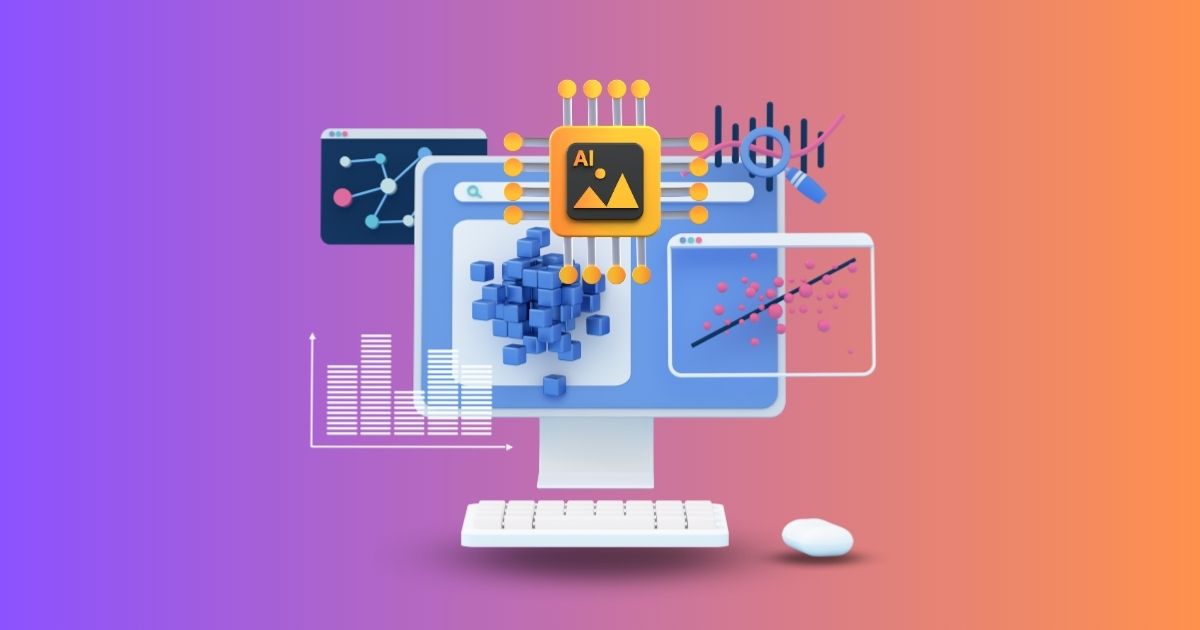
Artificial intelligence (AI) continues to push the boundaries of creativity and efficiency in user interface (UI) design. In fact, AI UI design generator tools are now available to assist in creating visually-appealing interfaces.
However, as with any innovation, there are benefits and drawbacks to consider. This article delves into the pros and cons of using AI UI generator apps. We’ll also look at insights into how these tools impact the design process.
What is an AI UI Design Generator Tool?
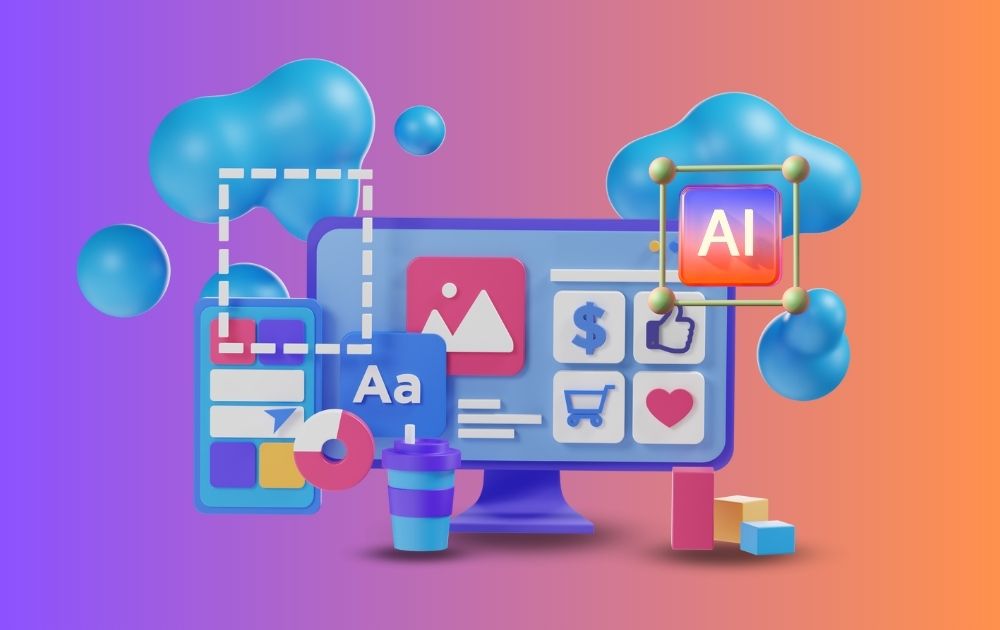
An AI UI design generator tool is an app or platform that uses AI to automate UI design creation. Like an AI painting generator, these tools generate layouts, color schemes, and other visual components based on learned patterns.
You can use many AI apps to generate UI design, even if they’re not made explicitly for UI. Here are a few apps you can use to design user interface:
- Khroma. While this tool is not solely an AI UI design generator, it tackles the issue of discovering ideal color schemes for projects. Khroma streamlines the process by removing the need for guesswork in color theory to create excellent interfaces.
- Galileo AI. This platform utilizes large language models to generate high-fidelity UI designs based on text prompts swiftly. By harnessing the power of these models, the platform digests intricate contexts and precisely fills in product copy, ensuring the production of high-quality designs.
- Fontjoy. This tool can assist in choosing fonts that have a consistent theme while offering an appealing contrast at the same time. Coming up with font combos that work takes design intuition and experience. If you have neither, this tool can help you pick fonts for your UI design and other design projects.
- Uizard. This tool allows users to rapidly create wireframes, mockups, and prototypes. Its intuitive drag-and-drop editor and advanced AI capabilities facilitate various tasks, including heatmap predictions, text generation, and UI theme creation.
You might be looking to use AI to generate UI or to assist you in choosing font combos and color palettes. Either way, there are pros and cons to using an AI UI design generator tool.
Pros of Using AI UI Design Generators

Here are the key advantages of using an AI UI design generator:
- Speed and Efficiency. An AI tool can automate repetitive and time-consuming tasks, such as creating layouts and generating icons. With the shortcut that AI offers, designers can save considerable time and effort. As a result, they can focus on higher-level design decisions and creative aspects. This streamlining effect can accelerate the project’s overall design timeline.
- Enhanced Consistency and Coherence. AI tools excel at creating a cohesive visual style throughout user interfaces. Often, these result in an end product that looks clean and polished. AI generators also assist in making consistent design elements such as buttons, menus, and icons. Since it’s automated, the tools decrease the risk of design discrepancies when different designers work on various parts of the UI.
- Access to Design Inspiration. AI can offer a wealth of creative ideas, references, and suggestions. These tools can enable them to explore new design directions and overcome creative blocks. In addition, AI generators can also identify successful design elements and popular trends, expanding the designer’s aesthetic mastery.
Cons of Using AI UI Design Generators
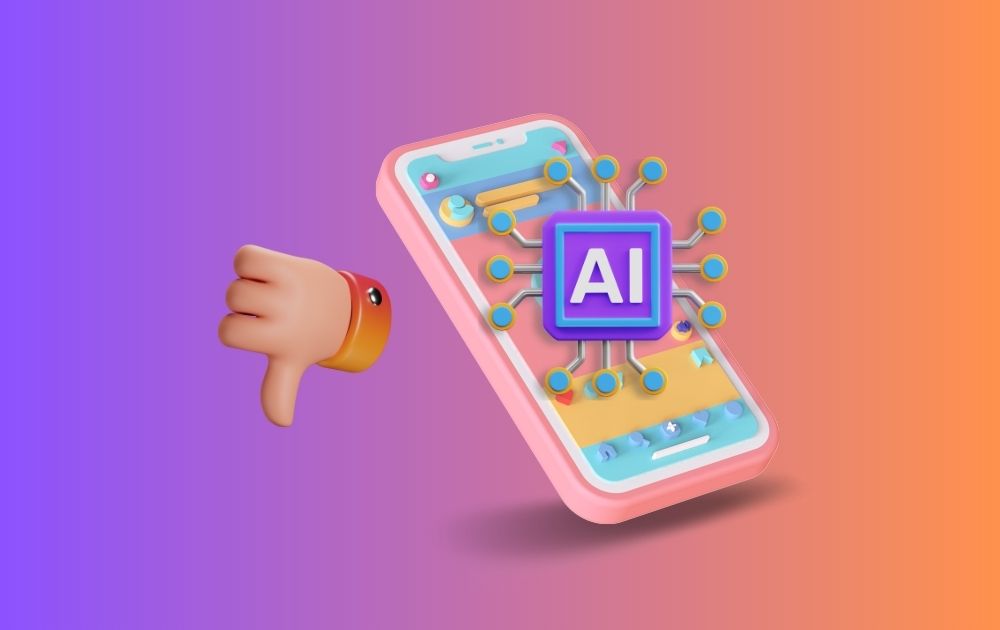
- Lack of Originality and Uniqueness. One downside of using AI UI design generators is that they might create designs that look similar to what already exists. These tools learn from existing designs and follow popular trends, so they might lack fresh and unique ideas. As a result, the designs they produce could end up feeling generic or repetitive without standing out from the crowd. It goes without saying that while AI tools can provide a starting point or inspiration, they might not have the same level of creativity as a human designer.
- Difficulty in Capturing Context and User Needs. As AI tools learn from existing designs, they might not grasp the unique needs of your target users. For instance, AI might miss the subtle details that make a design truly tailored to your users. This is surely a drawback because understanding user needs is vital in creating designs that work well for a specific audience.
- Reduced Huser interface’s human Touch and Personalization. AI algorithms follow patterns and data, but they can’t bring the same level of human intuition and creativity. Human designers can infuse their own ideas, experiences, and emotions into the design process, making the interface feel more personal and unique. With AI tools, there is a limit to the level of personalization they can provide.
Ethical Considerations of Using AI UI Design Generators
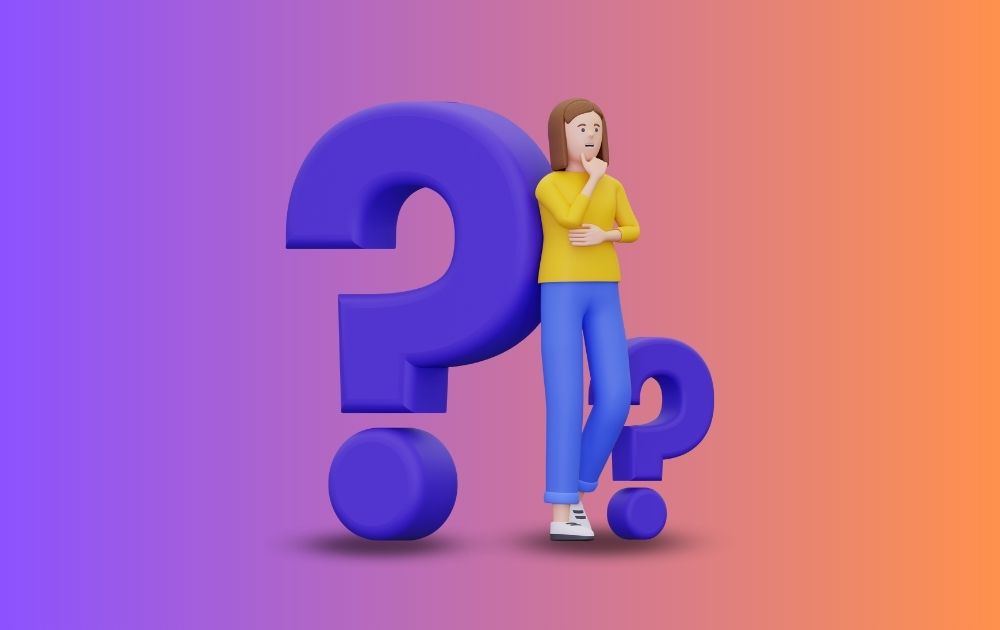
Along with the benefits it offers, AI also has ethical considerations. For one, there can be a potential for unintended biases in the generated designs.
These biases can stem from the training data used to develop the algorithms, which may contain inherent biases from the sources it was collected from. It is, therefore, crucial to be mindful of biases related to gender, race, culture, and other factors, as they can unintentionally be reflected in the design outputs.
The Lowdown
While AI UI design generator tools can assist and offer inspiration, human designers bring a unique set of skills and perspectives that ultimately contribute to the creation of more engaging, tailored, and impactful UI designs.
Human designers possess the ability to think critically, challenge norms, and come up with fresh and innovative design concepts. This creative thinking is vital for creating designs that stand out, evoke emotions, and provide a memorable user experience.
In addition, UI design is an iterative process that involves continuous refinement and collaboration. Human designers can actively engage with stakeholders, gather feedback, and iterate on the design based on evolving requirements. This collaborative approach ensures that the UI design is refined, optimized, and meets the evolving needs of the project.
Need expert UI design designed by humans? Check out Penji. Here are a few UI designs we’ve done for our clients:
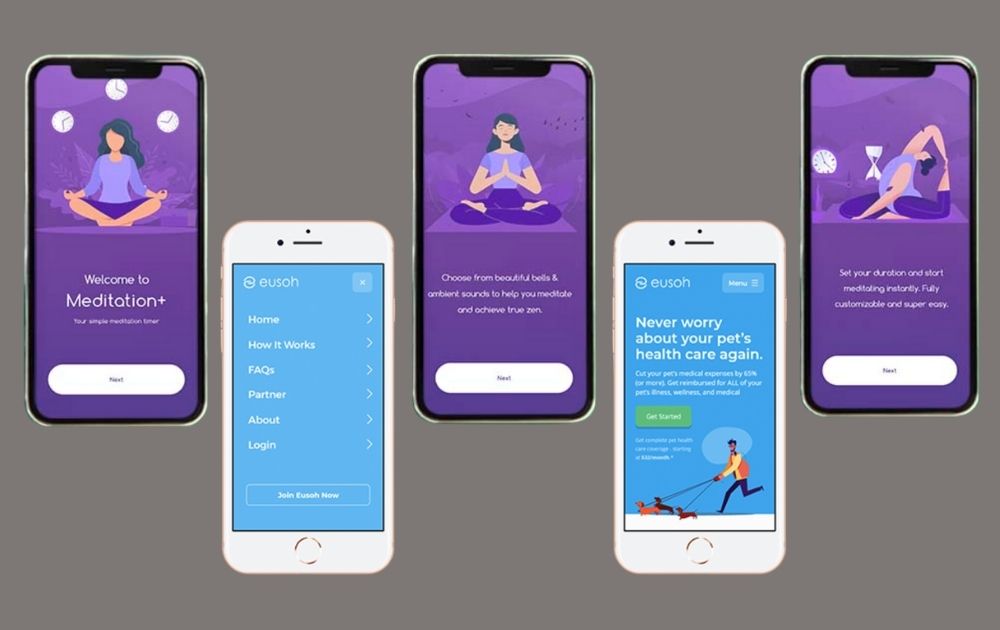
Sign up with Penji and get a high-quality interface created by the world’s top 2% of creatives.
About the author

Carla Deña
Carla is a journalist and content writer who produces stories for both digital and legacy media. She is passionate about creativity, innovation, and helping small businesses explore solutions that drive growth and social impact.










